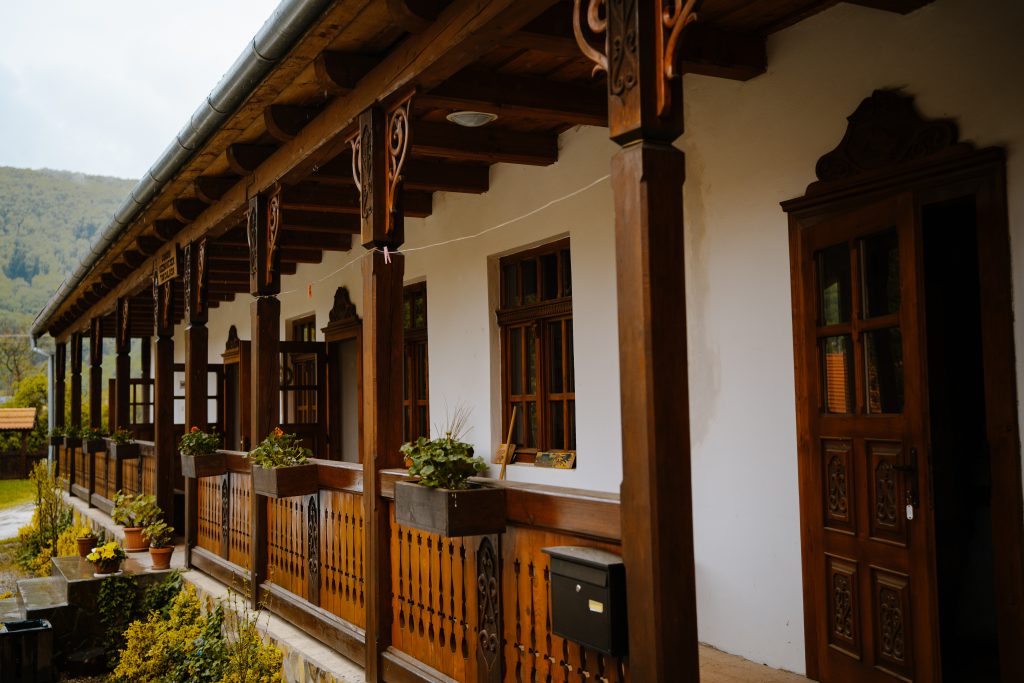
Untouched traditions and crafts
Crafts House in Krásnohorská Dlhá Lúka
Craft in the Gemer Region
In the past, no household could do without skilled craftsmen. The inhabitants of the villages were self-sufficient and were helping each other. Many crafts have fallen into oblivion over time, replacing them with modern factories that produce products literally on a treadmill. They lack originality, uniqueness, idea. And it would probably turn out that without the passionate people who still believe that traditional practices and honest handicrafts every craft offers more. They pass on traditions to future generations. Such craftsmen may also be found at Gemer in the village of Krásnohorská Dlhá Lúka, where the Association of Gemer Craftsmen was established and the Crafts House was built. In its premises, you will find a place to present the products of individual craftsmen and also a place where you also may learn individual crafts. Skilled people, who respect the traditions of their ancestors, will share their knowledge with you.


You may also try these crafts in the Craft House:
Corn husking
Corn husking was once widespread, especially in areas with good conditions for growing maize. In this country, it was mainly in southern Slovakia. Products made from dried corn leaves have often been used in the household as utility and decorative items. Mats, bags, children’s baskets, hats, pot mats and even shoes were made from this readily available material. Gradually, the transition was noted from coarse shapes to softer, more aesthetic ones. Colours and various weave patterns were added. Don’t worry, we haven’t forgotten about the iconic dolls, popular not just in this country but also abroad. In the past, children used to be playing with dolls, they were simple, less decorated. Today, they are often depicted in artworks from the traditional folk environment, sometimes dressed in traditional costumes, simple or blueprinted fabrics.

Basketry
Basketry products were commonly used for the storage and transport of various materials and foods. They were an important part of the equipment of every peasant farm, they were also used by craftsmen and merchants, they were also used in urban households. The assortment of basketry products was diverse. They have retained their technical and artistic quality, interesting shapes and imaginative design. The most common of them included baskets of various sizes, shapes, and purposes, made of willow. We may still admire these products today. It is one of the oldest crafts that has survived unchanged to this day.
Pottery
Under the hands of experienced masters, clay objects were created for practical household needs. They were originally modelled by hand, later using a potter’s wheel or shaping using moulds. Every good housekeeper had a set of earthenware, which, thanks to their availability and considerable fire resistance, were widely used. Today, in addition to clay kitchenware, we may also admire various decorative items decorated with ornaments and coloured glaze. Production has been partially modernised, but hand-clay contact has remained.
More information may be found at:
Granary in Jablonov nad Turňou
Pottery in Háj
Kaltenecker Brewery in Rožňava


V Remeselníckom dome si môžete vyskúšať aj tieto remeslá:
Šúpoliarstvo
Šúpoliarstvo bolo kedysi rozšírené najmä v oblastiach s dobrými podmienkami na pestovanie kukurice. U nás to bolo najmä južné Slovensko. Výrobky zo sušených listov kukurice mnohokrát slúžili v domácnosti ako úžitkové i dekoračné predmety. Z tohto ľahko dostupného materiálu sa vyrábali rohože, tašky, detské koše, klobúky, podložky pod hrnce a dokonca aj obuv. Postupne sa od hrubých tvarov prechádzalo k jemnejším, estetickejším. Pridávali sa farby a rôzne výpletové vzory. Nebojte sa, nezabudli sme ani na ikonické šúpoľové bábiky, populárne nielen u nás, ale aj v zahraničí. V minulosti sa s bábikami hrali deti, boli jednoduché, menej vyzdobené. Dnes sa často zobrazujú pri prácach z tradičného ľudového prostredia, niekedy sa odievajú do krojov, jednoduchých alebo modrotlačových látok.

Košikárstvo
Košikárske výrobky bežne slúžili na uskladnenie a transport rôznych materiálov a potravín. Boli dôležitou súčasťou vybavenia každého roľníckeho hospodárstva, používali ich aj remeselníci, obchodníci, nechýbali v mestských domácnostiach. Sortiment košikárskych výrobkov bol rozmanitý. Zachovali si technickú i výtvarnú kvalitu, zaujímavé tvary a nápadité vypracovanie. Najrozšírenejšie boli koše rôznej veľkosti, tvaru a určenia, vyrábané z vŕbového prútia. Tieto výrobky môžeme obdivovať ešte aj dnes. Je to jedno z najstarších remesiel, ktoré v nezmenenej forme prežilo až do dnešných dní.
Hrnčiarstvo
Pod rukami skúsených majstrov vznikali hlinené predmety pre praktické potreby v domácnosti. Pôvodne sa modelovali ručne, neskôr s využitím hrnčiarskeho kruhu či tvarovaním pomocou foriem. Každá správna gazdiná mala súpravu hlineného riadu, ktoré vďaka svojej dostupnosti aj značnej ohňovzdornosti nadobudli široké uplatnenie. Dnes okrem hlineného riadu, môžeme obdivovať aj rôzne dekoračné predmety zdobené ornamentami a farebnou glazúrou. Výroba sa čiastočne modernizovala, no kontakt rúk s hlinou ostáva zachovaný.
Viac informácii nájdete na:
























